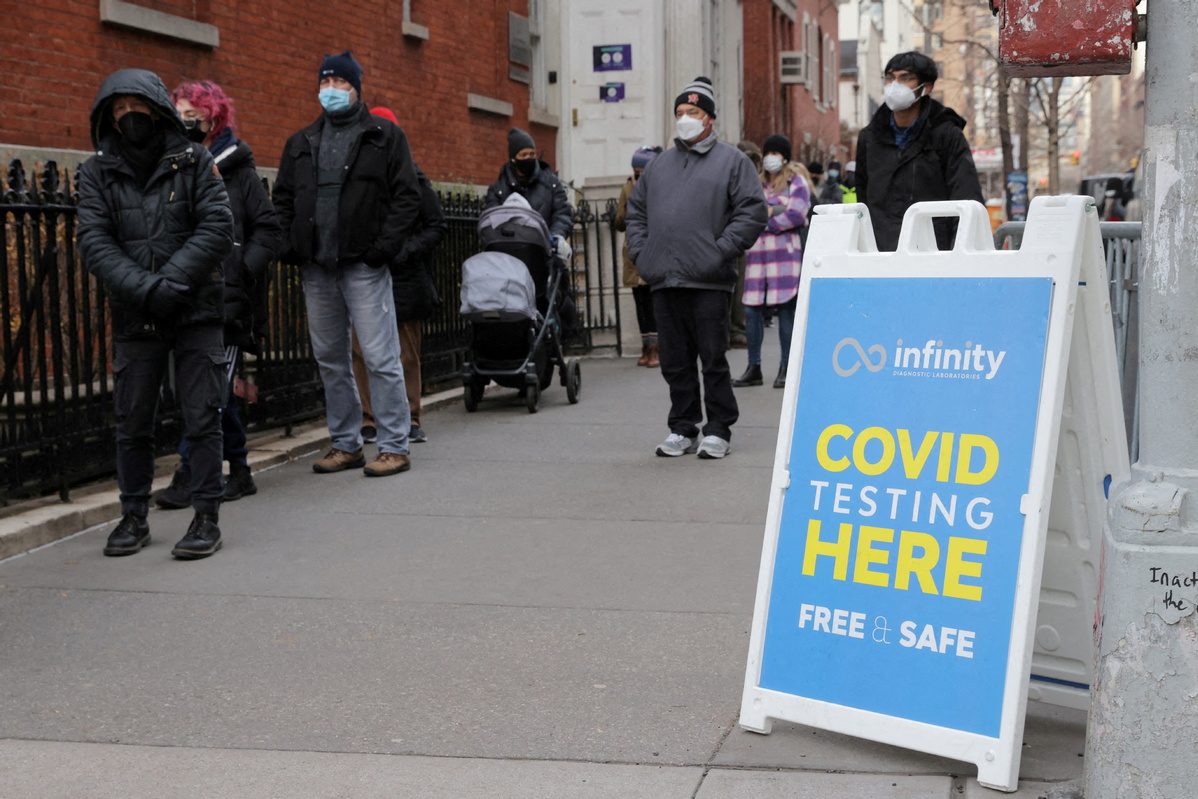
中国男乒3:0战胜瑞典 | 8k8 com register mobile | Updated: 2024-08-17 12:16:48

NEW YORK - The coronavirus continues to adversely impact the lives of millions of Americans as Omicron ravages the country, with the latest official data showing the variant currently accounts for 99.9 percent of all the new coronavirus cases in the United States.
Rochelle Walensky, director of the US Centers for Disease Control and Prevention, warned on Wednesday that "we cannot look past the strain on our health systems and substantial number of deaths -- nearing 2,200 a day as a result of the extremely transmissible Omicron variant".
COVID-19 hospitalizations slowed in the United States, with the seven-day average of hospital patients with confirmed or suspected infections dropping to 146,769 on Saturday, about 8 percent down from a peak on Jan 20, according to data from the Department of Health and Human Services.
However, the rolling seven-day average of daily COVID-19 deaths continued to rise, reaching 2,379 on Friday, according to data from Johns Hopkins University.
"COVID-19 deaths in the United States are running at their highest level since February last year," reported The Wall Street Journal on Sunday.
"Even though the evidence suggests the highly contagious Omicron variant of the virus is less likely to cause severe illness and death than previous variants, the sheer number of Omicron infections is leading to a heavy toll," it said, adding that while the Omicron tide appears to be receding in some states, epidemiologists warn that it hasn't yet peaked in some less-vaccinated parts.
Throughout the pandemic, people with underlying medical conditions like asthma, diabetes, heart or lung disease have been at higher risk for serious illness from COVID-19.
More than half of American adults have at least one underlying chronic condition, and for many of them, the Omicron wave hasn't been as mild as it has for the larger and healthier populations around the world, reported The New York Times on Sunday.
The majority of those hospitalized with severe illness during the Omicron surge are unvaccinated, "but some who were vaccinated and have underlying conditions have also been at risk for more serious illness caused by the virus, and for the infection potentially worsening their existing diseases, increasing their chances of hospitalization," it added.
About 3 in 10 families with children are headed by single parents, according to the US Census, and 75 percent of those parents are mothers. More than 10 million households in America are single-parent families, who often feel like outliers, especially during the pandemic, according to a report by The Washington Post.
The outlier sense is particularly strong during this stage of the pandemic, "as they cope with years of cumulative stress as well as the fresh chaos unleashed by the Omicron variant", said the report, adding that "there has been plenty of public acknowledgment of the cumulative, crushing toll these past years have taken on (single) parents".
Many parents say they've felt painfully overlooked: by school systems that expect them to be able to accommodate virtual learning; by employers who aren't flexible when a day-care closure upends a workweek; by lawmakers who have withdrawn financial safety nets; and by health guidelines that are often impossible for a solo-parent household to follow, it added.
This winter, as the Omicron variant leads to a spike in coronavirus cases, the disruptions on campus appear endless. Some school districts extended winter break or returned temporarily to remote learning, while some schools, already struggling with a nationwide labor shortage, were forced to cancel classes after staff members got sick.
"And while most are back in class today, a sense of profound isolation persists. There are feelings of loneliness and angst. Many students feel that an entire system has failed them," reported the NYT on Sunday.
For many schools, the risk of infection has not been the only concern. Even in states that are determined to stay open, districts are dealing with staff shortages, while students and teachers are frequently absent, said the report.
For a vast majority who are back in school, many are still playing academic catch-up as "they juggle safety concerns, sporadic quarantines and staff shortages", it said.

